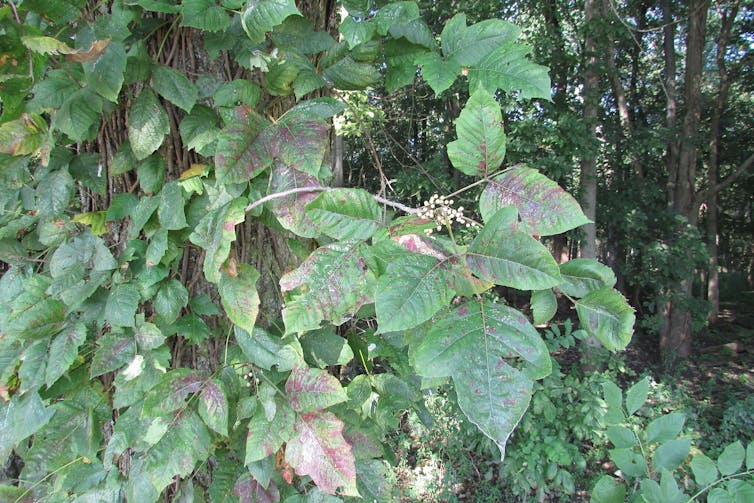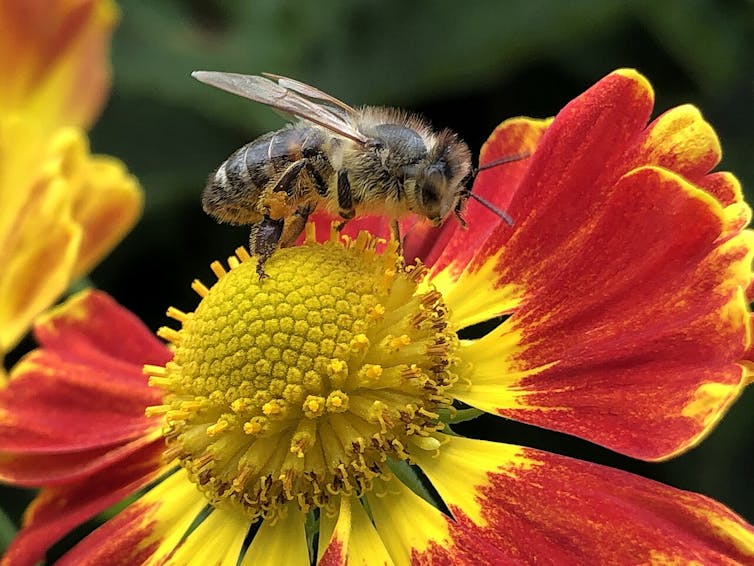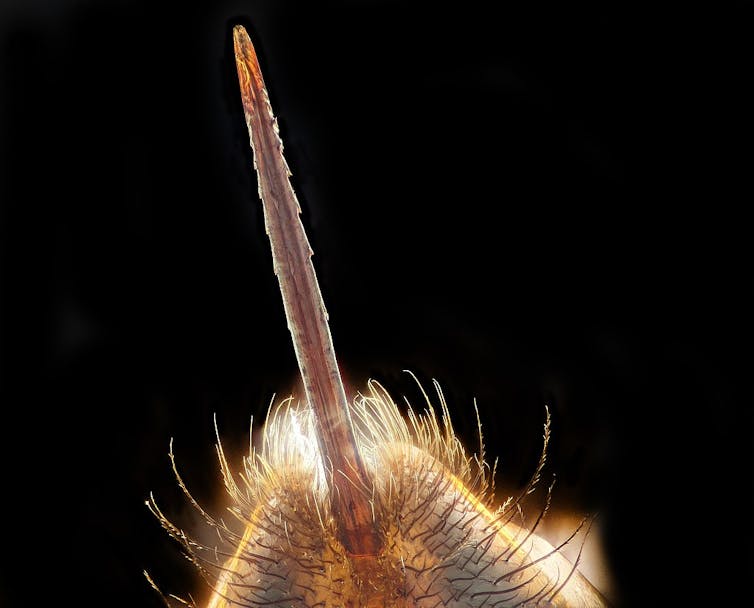Enjoying the outdoors carries the danger of running into nature's less-friendly side: toxic plants and animals.
Authors
- Christopher P. Holstege
Professor of Emergency Medicine and Pediatrics, University of Virginia
- Sandra H. Nixon
Fellow in the Division of Medical Toxicology, University of Virginia
As toxicologists at the University of Virginia's Blue Ridge Poison Center, we see many patients each year suffering from itchy rashes from poison ivy and stings from wasps or bees.
Plants and animals deploy toxins most often in order to defend themselves . Learning how they do that and what happens when the human body is exposed to these substances can offer insights on how to prevent or manage these encounters with nature.
The goal is not to scare people away from the outdoors, but to equip them with the knowledge to appreciate these organisms' intricate self-preservation strategies and to protect themselves in return.
Poison ivy, a ubiquitous source of itch
Whether in a remote state park or on a city playground, most people have encountered poison ivy. This plant is recognizable by its characteristic arrangement of leaves growing in groups of three with edges that vary from smooth to jagged. It can take many forms: a single small plant, a mass of ground cover, a small bush, or a climbing vine reaching many feet up a tree or building.

Poison ivy - its scientific name is Toxicodendron radicans - and its close relatives poison oak and poison sumac contain an oily substance called urushiol . This chemical is found in every part of the plant: the leaves, roots, stems and even the small white berries it produces in late summer.
About 75% of people will develop an allergic reaction on contact with urushiol . Urushiol has antimicrobial properties, and scientists think its job in the poison ivy plant is to protect it from diseases .
Because it is so oily, urushiol spreads easily. It can transfer from the plant to your skin, clothes, garden tools or even your pets. Direct plant contact isn't the only risk: If urushiol is on your clothing or a pet's fur and your skin later brushes against it, you can develop the same rash as you'd get from directly touching the plant.
From plant to skin
Urushiol triggers a delayed allergic reaction. When the oil touches your skin, it binds to skin cells, changing their shape . A molecule called CD1a then clocks urushiol as a foreign substance, prompting the immune system to mount an attack on the cells - hence the rash.
The symptoms do not appear instantly; the rash usually appears 12 to 48 hours after exposure. It often starts as redness and itching, then develops into small bumps or fluid-filled blisters. The reaction can be mild or severe, depending on how sensitive you are and how much urushiol got on your skin.
The rash itself isn't contagious. Fluid from the blisters doesn't spread it. What spreads the rash to other areas of your body or to others is the urushiol lingering on your skin, clothing, tools or pets. Once the oil is adequately washed away, the rash can't spread to other people or to other areas of your body.
If you have touched poison ivy, wash the area as soon as you can with soap and water and change your clothes if possible. After that, the rash will eventually resolve on its own. You can help alleviate symptoms by using a topical steroid or anti-itch cream on the rash. In severe cases, or if the face is affected , patients may require oral steroids to treat the symptoms.
Bees and wasps: Home defenders
Bees and wasps are most active in the late summer . Because of this, we receive more frequent poison center calls about them during this season.

Bees and wasps generally sting to defend their hives or nests or to protect themselves from perceived threats. They store venom in their abdominal sacs. When they sting, the venom flows through their stinger and is injected into their target's skin.
This venom is a clear, slightly acidic liquid loaded with various active ingredients. For example, it contains enzymes such as phospholipase A2 that break down cell membranes , and peptides such as melittin that cause pain . The venom also contains natural chemicals such as histamine and epinephrine that affect blood vessels and the immune system.
Sting mechanics
Unlike with poison ivy, where the immune system's reaction to the substance causes irritation, with bee and wasp stings it's primarily the substance itself that causes pain - although immune response can still play a role. As soon as the venom enters a person's skin, their body reacts.
A sharp, burning pain comes first as the components of the venom begin to inflict damage, followed by redness and then swelling of the area. Symptoms commonly peak within a few hours and fade within a day. However, some people have stronger reactions with larger areas of swelling that can last for several days. This is because everyone's immune system is slightly different, and some people tend to have stronger reactions than others to foreign substances.

In rare cases, the immune system overreacts, releasing large amounts of histamine and other chemicals all at once. Histamine is most often released in response to a foreign substance, causing symptoms of an allergic reaction. This can lead to anaphylaxis , a severe allergic reaction that can make breathing difficult, lower blood pressure and cause airway swelling, and which can quickly become life-threatening.
Getting stung multiple times at once can also be life-threatening due to the sheer amount of venom injected , even in people without a bee venom allergy.
If you're stung and the stinger is stuck in the skin, it should be removed immediately by the quickest means available. Bee stingers are barbed and can continue to deliver venom for up to a minute. Most bee or wasp stings require only symptomatic treatment, such as an over-the-counter steroid cream or oral antihistamine to reduce itching and swelling.
However, people who begin to develop more severe symptoms such as full body hives, vomiting or difficulty breathing should immediately seek emergency care. Anaphylactic reactions require rapid treatment with a medication called epinephrine and close monitoring in the hospital.
![]()
The authors do not work for, consult, own shares in or receive funding from any company or organization that would benefit from this article, and have disclosed no relevant affiliations beyond their academic appointment.






